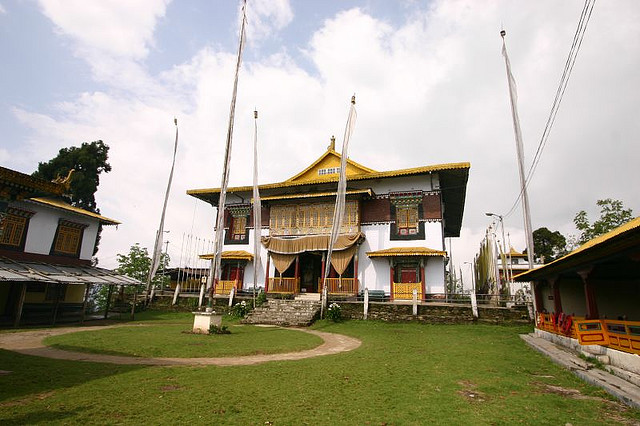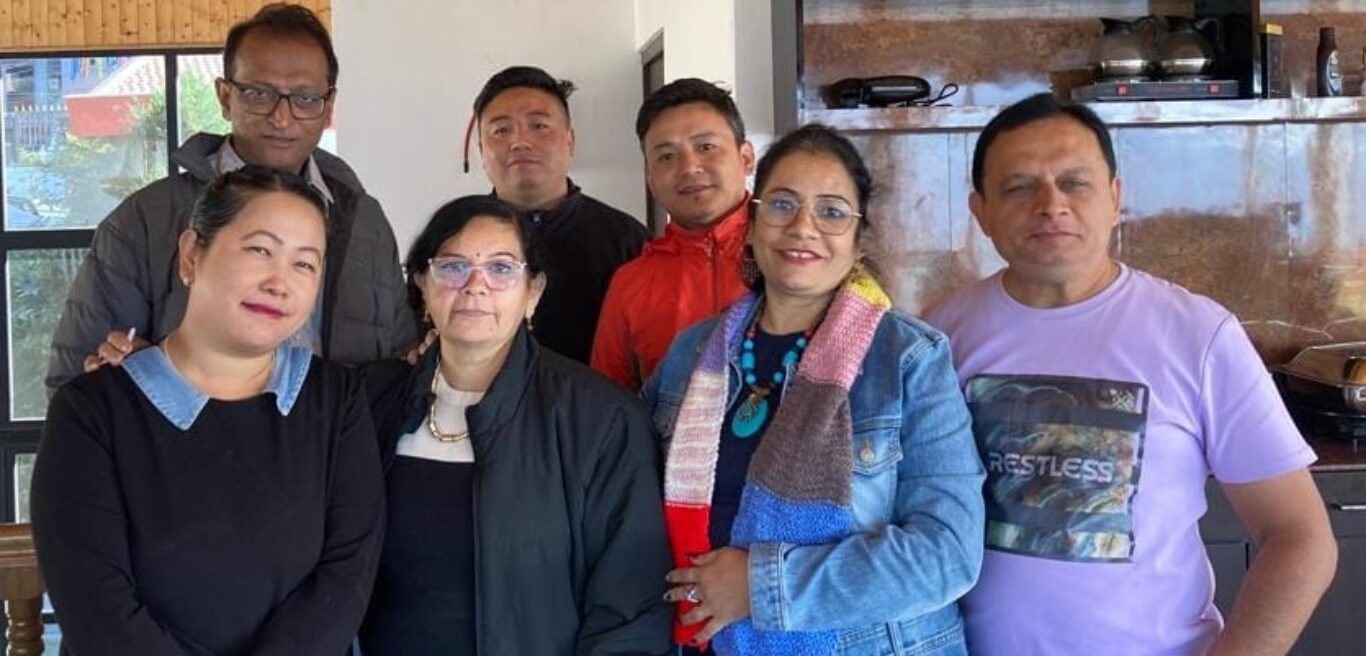PEMAYANGTSE MONASTERY
Pemayangtse Monastery stands as a testament to the rich cultural tapestry and spiritual legacy of the region. Founded by Lama Lhatsun Chempo in 1705, this three-storied structure is not just one of the oldest monasteries in Sikkim but also one of the most prestigious within the Nyingma Order of Tibetan Buddhism.
The name ‘Pemayangtse’ translates to ‘Perfect Sublime Lotus’, symbolizing purity and spiritual unfolding, much like the lotus that rises unsoiled from muddy waters. This is fitting for a monastery that has maintained its sanctity and exclusivity, allowing only monks of pure Tibetan lineage, known as ‘ta-tshang’, to reside within its sacred walls.
As you approach Pemayangtse, the journey itself becomes a prelude to the tranquility that awaits. The winding roads, flanked by lush greenery, lead you to an elevation where the air is crisp, and the panoramic views of the Himalayas are breathtaking. The monastery, perched atop a hill, overlooks the ruins of Rabdentse – the former capital of the Kingdom of Sikkim – and offers a visual narrative of the region’s history and the monastery’s role.
The architecture of Pemayangtse Monastery is a marvel in itself. The main hall houses a plethora of ancient murals and sculptures, each narrating stories from Buddhist lore. The most striking feature, however, is the seven-tiered wooden structure depicting the heavenly abode of Guru Rimpoche, adorned with intricate carvings and delicate artistry that leave visitors in awe.
The monastery is not just a repository of art and culture; it is a living center of spiritual practice. The air resonates with the chants of monks and the rhythmic beats of drums during daily prayers. The ambiance is imbued with a sense of peace and introspection, inviting visitors to pause and reflect.

Pemayangtse Monastery also serves as the starting point for the sacred Buddhist pilgrimage circuit in Sikkim, connecting it to other significant sites like the Dubdi Monastery, Norbugang Chorten, Tashiding Monastery, and the holy Khecheopalri Lake. This circuit is not just a journey through picturesque landscapes but a voyage into the spiritual heart of Sikkim.
The annual ‘Cham’ festival, held on the 28th and 29th days of the 12th Tibetan month, is a spectacle not to be missed. Monks don vibrant costumes and masks, performing ritual dances that are believed to ward off evil spirits and bring blessings for the New Year. This festival is a profound expression of the monastery’s religious heritage and its role in the community.
Visiting Pemayangtse Monastery is more than a tourist experience; it is an immersion into a world where spirituality and nature coalesce. Whether you are seeking solace, artistic inspiration, or a deeper understanding of Buddhism, Pemayangtse offers a unique and enriching perspective.
For those planning to visit, the best time is between March to June, when the weather is pleasant, or during the winter months when the monastery is enveloped in a mystical aura. However, the monsoon season from July onwards brings heavy rains, making travel challenging.
In conclusion, Pemayangtse Monastery is not just a destination; it’s a journey into the soul of Sikkim. It’s a place where history whispers through the ancient walls, where art and spirituality intertwine, and where every visitor takes back a piece of peace. It’s a must-visit for anyone traveling to the East, a sublime lotus blooming in the heart of the Himalayas, waiting to be discovered.


